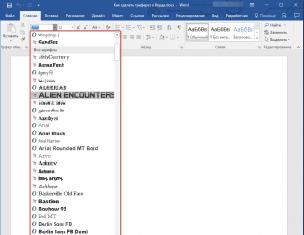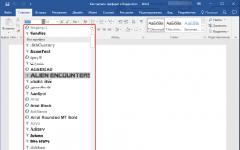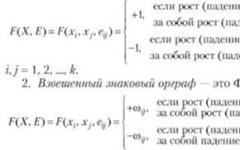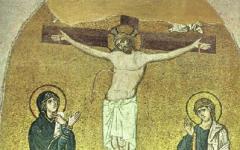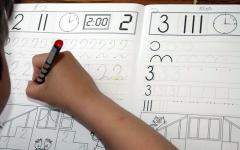Leonardo da Vinci is an outstanding artist, the man of genius of Renaissance and Humanism. The unique fame that the Florentine artist and scientist Leonardo da Vinci enjoyed in his lifetime has remained undimmed to the present day. It is based on the equally unique universality of his spirit. He was a painter, sculptor, architect and engineer. An unlimited desire for knowledge guided his thinking and behaviour. He found that his eyes were his main avenue to knowledge. «Knowing how to see» (Saper vedere) became the great theme of his studies of man’s works and nature’s creations. His superb intellect, his unusual powers of observation, and his mastery of the art of drawing led him to the study of nature itself.
Leonardo was born in 1452 on his father’s family estate in Vinci. His father was a Florentine notary and landlord. His mother was a young peasant woman. Leonardo grew up in his father’s house, where he was treated as a legitimate son and received the usual elementary education of that day: reading, writing, and arithmetic.
Leonardo’s artistic inclinations must have appeared early. When he was about 15, his father took him to a renowned workshop of Andrea del Verrocchio. Leonardo received a many-sided training that included not only painting and sculpture but the technical-mechanical arts as well. In 1472 Leonardo was accepted in the painters’ guild of Florence and worked independently until 1481.
In 1482 he moved to Milan where he spent 17 years serving the Duke until Ludovico’s fall from power in 1499. Highly esteemed, Leonardo was constantly kept busy as a painter and sculptor and as a designer of court festivals, technical adviser and engineer. There Leonardo’s genius unfolded to the fulL He created «Lady with an Ermine» (the portrait of Cecilia Gallerani), an altar painting of «The Virgin of the Rocks», a monumental wall painting of the «Last Supper». He wrote treatises on painting, architecture, a book on the elements of mechanics, a work on human anatomy, geographical, botanical, hydrological and aerological researches.
From 1500 till 1502 Leonardo travelled from one city to another until he entered the service of the notorious son of Pope Alexander VI, Cesare Borgia as «senior military architect and general engineer». Only his «appetite to life» can explain Leonardo’s decision. For ten months he travelled across the territories and sketched some of the city plans and topographical maps that laid the groundwork for modern cartography. In 1503 he returned to Florence and for three years worked on «Battle of Anghiari» but it remained unfinished. These same years he painted the portrait of «Mona Lisa» and a painting of a standing «Leda», which was not completed and has survived only in copies.
In 1506 the governor of Milan invited Leonardo da Vinci and the latter accepted the invitation. In Milan he did very little as a painter but his scientific activity flourished.
In 1513 Leonardo went to Rome hoping to find employment there. He remained in the Eternal City for three years. While Donato Bramante’was building St. Peter’s, Raphael was painting the last rooms of the Pope’s new apartments, Michelangelo was struggling to complete the tomb of Pope Julius, and many younger artists were active there, the ageing master worked in his studio on mathematical studies and technical experiments.
In a life of such loneliness, it is easy to understand why Leonardo, despite his 65 years, decided to accept the invitation of the young king Francis I to enter his service in France. Leonardo spent the last three years of his life in the small residence near the King’s summer palace. The King treated him in every respect as an honoured guest. Leonardo spent most of his time arranging and editing his scientific studies.
Никто не станет спорить, что Леонардо да Винчи (1452-1519) — один из величайших художников. Его «Тайная вечеря» — одна из самых известных картин в мире. Но Леонардо стал бы знаменитым, даже если бы ничего не нарисовал. Ведь он был и великим изобретателем. Он изобрел ручную тележку, военный танк и роликовые подшипники. Он спроектировал многие виды оружия и механизмов. Он также проводил эксперименты с моделями аэропланов и подводных лодок.
Кроме того, Леонардо был великим ученым и конструктором. А еще он был поэтом, музыкантом и скульптором. Наверно, больше никому в истории человечества не удавалось научиться стольким вещам за свою жизнь. Конечно же, Леонардо да Винчи можно по праву назвать гением.
Леонардо родился в селении Винчи в Италии. Большую часть своего детства он провел с родителями отца. Леонардо был красивым мальчиком с кудрявыми волосами и голубыми глазами.
Когда его отец заметил, что мальчик интересуется рисованием, он отправил его к замечательному художнику и учителю. Однажды Леонардо нарисовал прекрасного ангела на картине своего учителя. «Ты — более великий художник, чем я, — сказал учитель, — я не буду больше рисовать».
Спустя какое-то время отец Леонардо решил, что не будет больше платить учителю. Он считал, что его сын проводит слишком много времени, изучая камни и растения, наблюдая за птицами, пытаясь выяснить, как устроено их тело, и создавая модели механизмов. Но Леонардо остался у учителя в качестве помощника. Он оставался с ними почти до 25 лет. Потом он начал рисовать самостоятельно, сначала во Флоренции, потом в Милане и Венеции, а в конце своей жизни — во Франции.
Идеи Леонардо многие художники переносили на свои полотна. «Пусть, — говорил он, — я буду создавать. А они пусть копируют».
Итак, великий художник оставил после себя немного картин, у него было много идей, и он создал множество замечательных эскизов карандашом и чернилами. Но у Леонардо было так много разных интересов, что он не мог себе позволить часами сидеть над одной картиной.
Некоторые его картины утеряны из-за любви художника к экспериментам. Он смешивал краски с воском, работая над замечательной фреской, изображающей конный бой, но воск растаял, и изображение исчезло.
«Тайная вечеря» находится на стене часовни в Милане. Эта картина стала известной задолго до того, как была завершена.
Картины Леонардо так красивы, что их так же трудно описать, как прекрасную музыку. Лица людей на картинах очень выразительны. Он по-новому использовал свет и тень, чтобы сделать своих персонажей боле естественными.
Одно из полотен Леонардо называется «Мона Лиза». Это портрет женщины с легкой улыбкой на лице. Портрет заказал муж этой женщины. Но Леонардо картина так понравилась, что он оставил ее себе. Он забрал ее с собой во Францию, где он провел свои последние годы, работая придворным художником короля Франции. Теперь эта картина — одна из сокровищ парижского Лувра.
Краткая биография Леонардо да Винчи на английском языке
Leonardo"s life
The famous figure of Leonardo da Vinci and the main episodes of his biography, narrated by Carlo Peretti, well known Leonardo"s life and works scholar.
On April 15, 1452 Leonardo was born in Vinci, a little village lying in the shelter of a Medieval castle on the slopes of Montalbano. [..]
Vinci is halfway between Florence and Pisa. Leonardo was born, then, in a little village apparently far removed from the world but in reality lying at the crossroads of great highways of communication.
At the age of sixteen or seventeen he moved to Florence, where his father, notary by profession, apprenticed him to work in Verrocchio"s workshop. The road he covered, on foot or on horseback - forty miles or so - is the one that still today runs along the Arno.
This same road had very probably already taken him to Pisa, attracted by a strange landscape where the rocky outcrops in the surrounding mountains often take on the primordial features appearing in the background of the Louvre Virgin of the Rocks, the first Milanese painting commissioned of him in 1483 when he was thirty-one. [..]
In Florence Leonardo spent twelve years of systematic study and intense experimentation, soon entering under the protection of Lorenzo de" Medici, almost his own age (1449-1492), a refined humanist, crafty merchant, wise statesman and skillful politician, but above all an incomparably able diplomat: in short, a master of communication. For the young Leonardo, Lorenzo was an intriguing example of the technique of communication, where the persuasive power of words was based on eloquence and psychology. Inspired by this example Leonardo began to refine his own visual language, adopting a kind of "speaking" painting which, with the Adoration of the Magi painted in 1481 at the age of twenty-nine, arrived at the intensely animated gestures and iconic impact of a silent film. [..] (follows)
1452 - Leonardo is born at Vinci on April 15, the natural son of the Notary Ser Piero di Antonio da Vinci.
1469 - Leonardo presumably enters Verrocchio’s workshop in this year.
1472 - He is enrolled in the painters’ association, the Compagnia di San Luca. His first works start from this date: costumes and sets for festivals and jousts, a cartoon for a tapestry (lost) and the paintings of uncertain dating.
1473 - He dates (August 5) the drawing of the Landscape of the Val d’Arno (Florence, Uffizi).
1476 - Accused of sodomy along with other persons, he is acquitted.
1478 - Leonardo is commissioned to paint the altarpiece for the Chapel of San Bernardo in Palazzo della Signoria. In this same year he states that he has completed two paintings of the Virgin, one of which is now identified as the Benois Madonna.
1480 - According to the Anonimo Gaddiano, Leonardo works for Lorenzo de’ Medici.
1481 - Contract for the Adoration of the Magi.
1482 - Leonardo moves to Milan leaving unfinished the Adoration, which he has just begun.
1483 - In Milan he stipulates the contract for the Virgin of the Rocks with Evangelista and Ambrogio de Predis.
1487 - Payment for projects for the lantern on the Milan Cathedral.
1489 - Leonardo designs sets for the festivities celebrating the wedding of Gian Galeazzo Sforza and Isabella d’Aragon. In this same year he begins preparations for the colossal equestrian sta¬ tue in honor of Francesco Sforza.
1491 - Giovanni Giacomo Caprotti da Ore¬no, known as “Salaì”, ten years old at the time, enters Leonardo’s service. The nickname “Salaì”, which means “devil”, derives from the boy’s unruly character.
1492 - For the wedding of Ludovico il Moro and Beatrice d’Este, Leonardo designs the costumes for the procession of Scythians and Tartars.
1494 - Land reclamation work on one of the Duke’s estates near Vigevano.
1495 - Leonardo begins the Last Supper and the decoration of rooms in the Castello Sforzesco. The artist’s name is mentioned as Ducal Engineer.
1497 - The Duke of Milan urges the artist to finish the Last Supper, which is probably completed by the end of the year.
1498 - Leonardo completes the decoration of the Sala delle Asse in the Castello Sforzesco.
1499 - Leonardo leaves Milan with Luca Pacioli. He stops at Vaprio to the Melzi fami¬ly, then leaves for Venice passing through Mantua, where he draws two portraits of Isabella d’Este.
1500 - In March he arrives in Venice. Returns to Florence where he resides at the Monastery of the Servite Brothers in Santissima Annunziata.
1502 - Leonardo enters the service of Cesare Borgia as architect and general engineer, following Borgia in his military campaigns through Romagna.
1503 - Leonardo returns to Florence where, according to Vasari, he paints the Mona Lisa. Devises projects for devia¬ting the Arno River during the siege of Pisa. Commissioned by the Signoria to paint the Battle of Anghiari.
1504 - Continues to work on the Battle of Anghiari. Is called upon to participate in the commission that will decide where to place Michelangelo’s David. First studies for a Leda.
1506 - Leonardo leaves Florence for Milan, promising to return within three months. The stay in Milan extends beyond this time.
1508 - Leonardo is in Florence, then returns to Milan.
1509 - Geological studies on the valleys of Lombardy.
1510 - Studies on anatomy with Marcantonio della Torre at the University of Pavia.
1513 - Leonardo leaves Milan for Rome, where he lives in the Vatican Belvedere, under the protection of Giuliano de’ Medici. Remains in the city for three years, engaged in mathematical and scientific studies.
1514 - Projects for draining the Pontine swamps and for the port of Civitavecchia.
1517 - Leonardo moves to Amboise, to the court of François I King of France. In mid-January he visits Romorantin with the King to plan a new royal palace and a system of canals for the region of Sologne.
1518 - Leonardo participates in the festivi¬ties for the baptism of the Dauphin and for the wedding of Lorenzo de’ Medici to the King’s niece.
1519 - On April 23 Leonardo writes his will. The executor is his friend the painter Francesco Melzi. He dies on May 2. In the burial certificate, dated August 12, he is described as a «noble Milanese, first painter and engineer and architect to the King, State Mechanic».
All of Leonardo"s work as painter and theoretician of painting is imbued with the concept that art should be considered a form of creative knowledge, on the same level as science and philosophy. And still today the lesson taught by Leonardo has the immediate impact of a live broadcast, whether it involves traditional media - still unsurpassed in historical research - or the new electronic technologies, now beginning to show their true worth as indispensable aid to historical research, having developed beyond the initial stage of games used in play.
On the other hand, Leonardo played too, as noted by Sigmund Freud already in 1910: «The great Leonardo, it seems, remained infantile in some aspects his whole life long. He continued to play even as an adult and for this reason too he was at times incomprehensible and disturbing to the eyes of his contemporaries».
And as such - disturbing and incomprehensible - he appears even today, five centuries later, since he has been more studied than understood. The genius has been rediscovered, but the man has been lost.
During a visit to Pavia in January 1490 accompanied by the Sienese architect Francesco di Giorgio Martini for a consultation on work then being done on the cathedral, Leonardo, then thirty-eight, was attracted by the ingenious arrangement of the rooms in a famous bordello in that city, and drew the floor-plan as a model "lupanare".
The drawing appears on a page in a manuscript from that time. [...]
On the same folio, at the same time, Leonardo notes: «catena aurea», which is the title of the grandiose Thomist compendium on the Gospels. These are small but sure indicators of how the real Leonardo, viewed in close-up, could finally re-emerge in the new millennium. After dying the first time in France on May 2, 1519, he has died many times over in the writings of posterity - those very writings that proclaimed his immortality.
Биография Леонардо да Винчи на английском языке представлена в этой статье.
Леонардо да Винчи краткая биография на английском
Da Vinci was one of the great creative minds of the Italian Renaissance, hugely influential as an artist and sculptor but also immensely talented as an engineer, scientist and inventor.
Leonardo da Vinci was born on 15 April 1452 near the Tuscan town of Vinci, the illegitimate son of a local lawyer. He was apprenticed to the sculptor and painter Andrea del Verrocchio in Florence and in 1478 became an independent master. In about 1483, he moved to Milan to work for the ruling Sforza family as an engineer, sculptor, painter and architect. From 1495 to 1497 he produced a mural of ‘The Last Supper’ in the refectory of the Monastery of Santa Maria delle Grazie, Milan.
Da Vinci was in Milan until the city was invaded by the French in 1499 and the Sforza family forced to flee. He may have visited Venice before returning to Florence. During his time in Florence, he painted several portraits, but the only one that survives is the famous ‘Mona Lisa’ (1503-1506).
In 1506, da Vinci returned to Milan, remaining there until 1513. This was followed by three years based in Rome. In 1517, at the invitation of the French king Francis I, Leonardo moved to the Château of Cloux, near Amboise in France, where he died on 2 May 1519.
The fame of Da Vinci’s surviving paintings has meant that he has been regarded primarily as an artist, but the thousands of surviving pages of his notebooks reveal the most eclectic and brilliant of minds. He wrote and drew on subjects including geology, anatomy (which he studied in order to paint the human form more accurately), flight, gravity and optics, often flitting from subject to subject on a single page, and writing in left-handed mirror script. He ‘invented’ the bicycle, airplane, helicopter, and parachute some 500 years ahead of their time.
If all this work had been published in an intelligible form, da Vinci’s place as a pioneering scientist would have been beyond dispute. Yet his true genius was not as a scientist or an artist, but as a combination of the two: an ‘artist-engineer’. His painting was scientific, based on a deep understanding of the workings of the human body and the physics of light and shade. His science was expressed through art, and his drawings and diagrams show what he meant, and how he understood the world to work.


